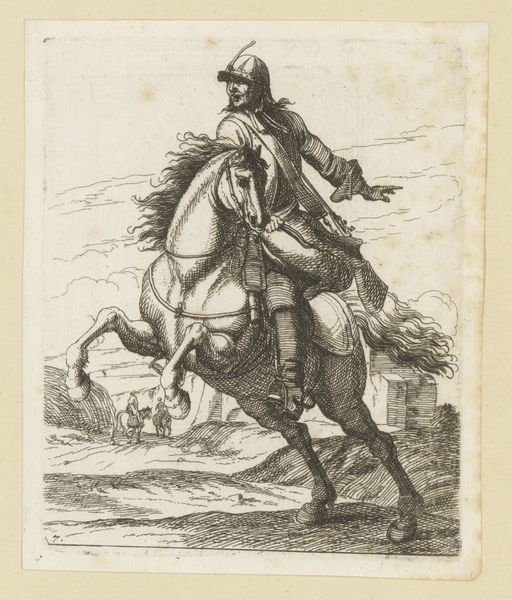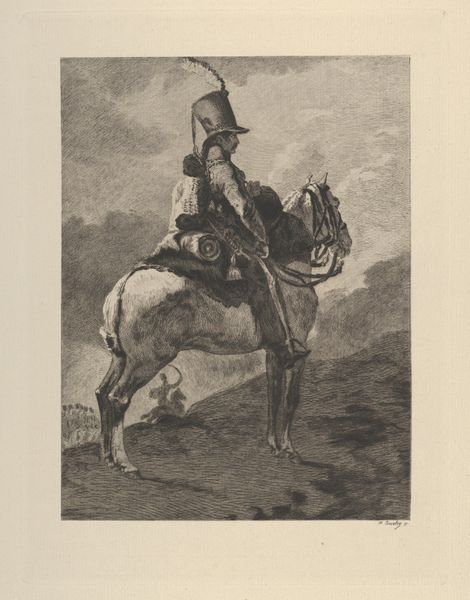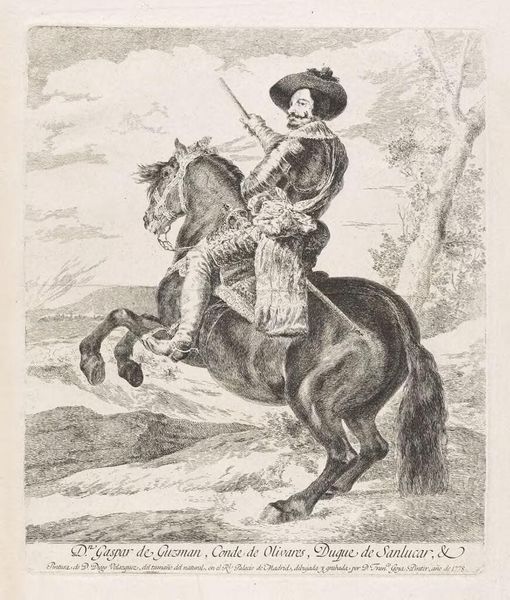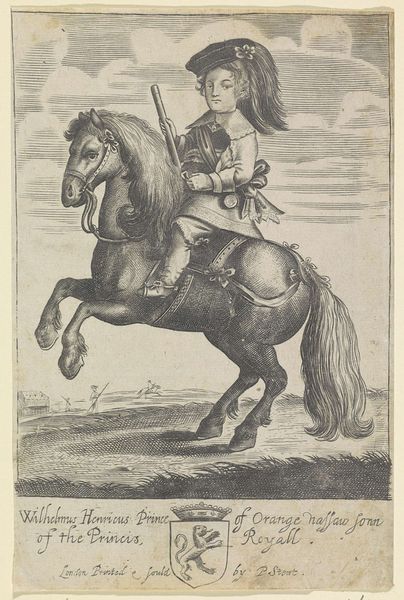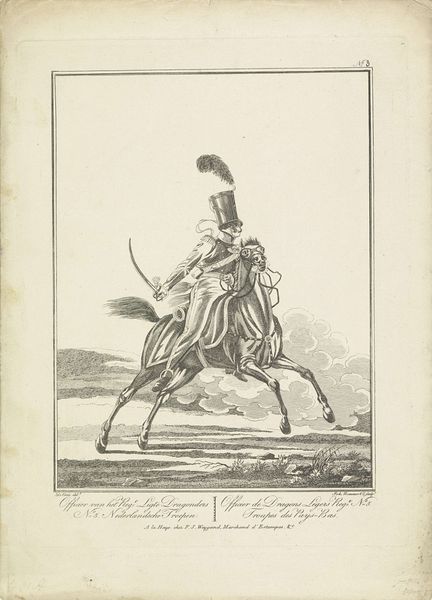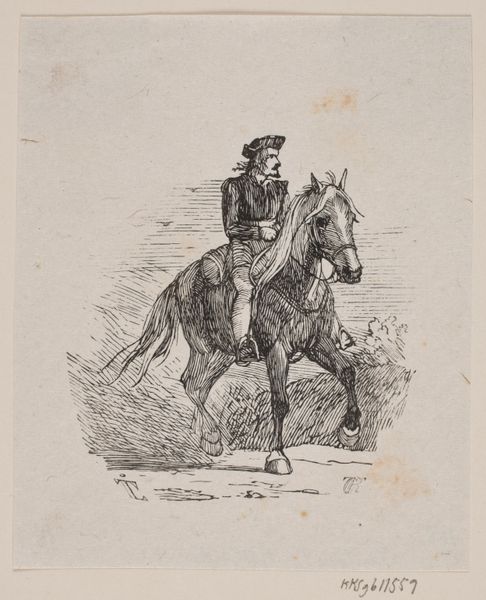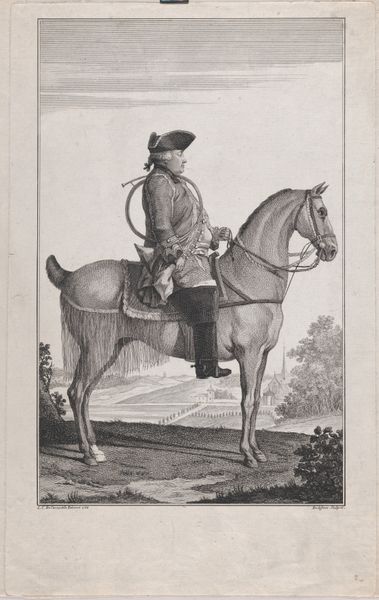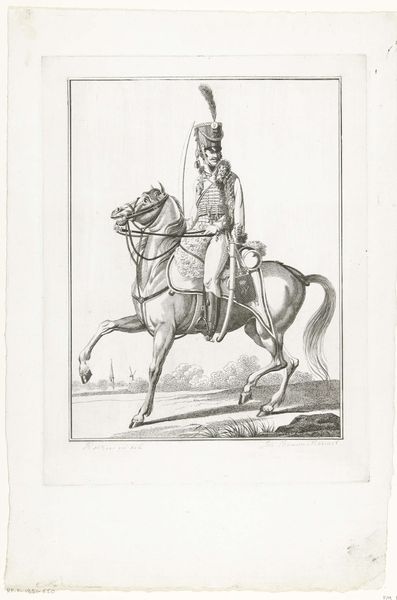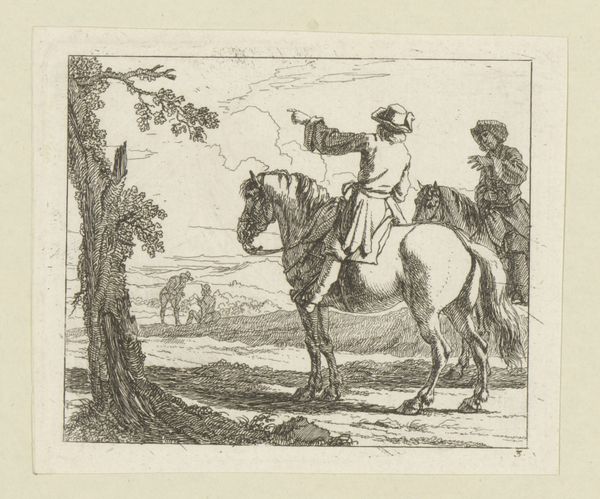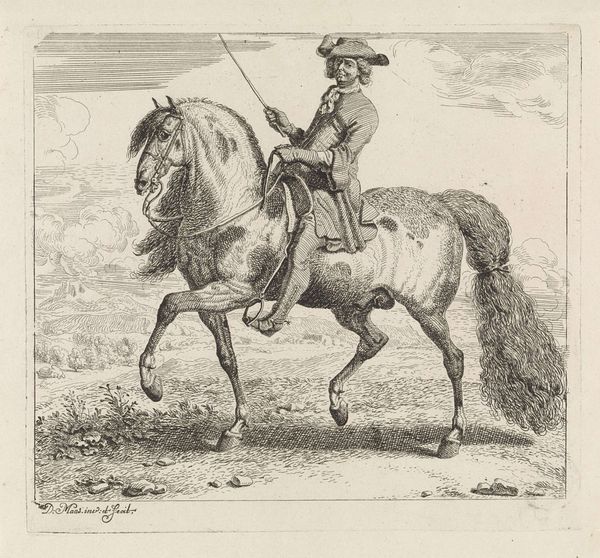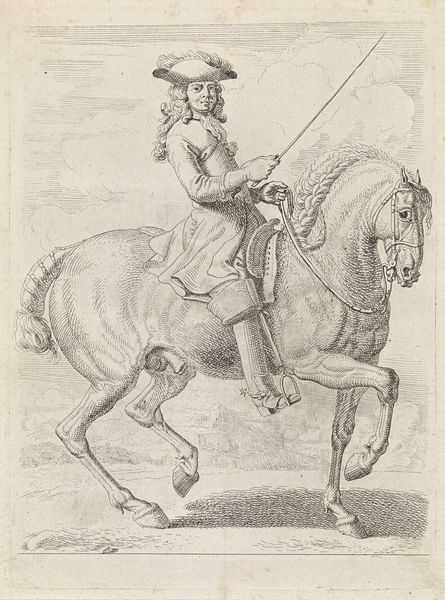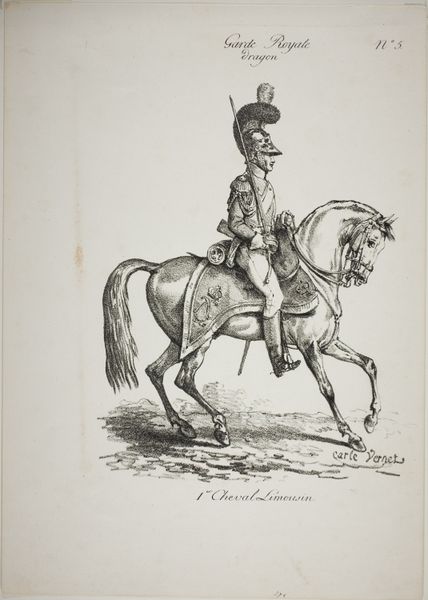
drawing, engraving
#
portrait
#
drawing
#
baroque
#
pencil sketch
#
figuration
#
pen-ink sketch
#
genre-painting
#
history-painting
#
engraving
Dimensions: height 120 mm, width 72 mm
Copyright: Rijks Museum: Open Domain
This etching, by Bernard Picart, was made in the early 18th century, using paper and ink, and a technique requiring considerable skill. The process of etching begins with a metal plate, coated with a waxy, acid-resistant substance. The artist scratches an image into this coating, exposing the metal beneath. Then, acid is applied, biting into the exposed lines. The longer the acid bath, the deeper and darker the lines become. Finally, the plate is inked, wiped clean, and pressed onto paper, transferring the image. The incisive quality of line in this small print speaks to the labor involved in its making, and the artist’s control. Although the subject is a man riding a horse, viewed from the back, the image is also about the character of line itself. Etchings like this were often made in multiples, becoming relatively affordable images in their time. Ultimately, this work shows us that even seemingly straightforward images involve a complex interplay of materials, labor, and social context. By recognizing this, we can move beyond traditional art history and appreciate the artistry in everyday objects.
Comments
No comments
Be the first to comment and join the conversation on the ultimate creative platform.
